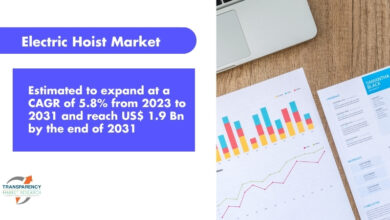This Is the City Hit Hardest by Extreme Poverty in Massachusetts
There are an estimated 39.5 million Americans living below the poverty line, which, in the lower 48 states, is an annual income threshold of $12,880 for an individual and $26,500 for a family of four (Alaska and Hawaii have a slightly higher threshold). Living in poverty can have serious consequences and impacts nearly every aspect of life — and those problems can be compounded for those who are facing poverty while also living in very poor neighborhoods.
Residents of poor neighborhoods often struggle with higher crime rates, limited employment opportunities, lower school quality, and poor health outcomes. For those living on poverty level income, each of these factors reduces the likelihood of upward economic mobility.
Nearly one in every four of the 97,700 residents of Springfield, Massachusetts, who live below the poverty line are in high-poverty neighborhoods — where at least 40% of the population live in poverty. Pittsfield is the metro area with the second highest concentrated poverty rate in Massachusetts, and fewer than one in every 10 people living below the poverty line there reside in high-poverty neighborhoods.
Educational attainment rates in Springfield’s poorest neighborhoods are low. Only 62.7% of adults in the city’s 15 high-poverty neighborhoods have a high school diploma and 9.3% have a college degree — compared to 90.0% and 34.1%, respectively, in the rest of the city.
All data used in this story are five-year estimates from the U.S. Census Bureau’s 2019 American Community Survey. We only considered census tracts, or neighborhoods, with at least 500 people and college or graduate school enrollment below 50%. Metro areas were also excluded if over 25% of the population in tracts or neighborhoods of concentrated poverty were college or university students.
Metro area with worst extreme povertyPoor residents in high-poverty neighborhoodsOverall poverty rateOverall poverty rate, statewideAlabama: Tuscaloosa16.7%18.2%16.7%Alaska: NoneN/AN/A10.7%Arizona: Phoenix9.9%13.6%15.1%Arkansas: Little Rock7.8%15.0%17.0%California: Fresno28.5%22.5%13.4%Colorado: Pueblo5.9%18.8%10.3%Connecticut: New Haven12.7%11.7%9.9%Delaware: NoneN/AN/A11.8%Florida: Tallahassee21.5%15.8%14.0%Georgia: Albany35.3%24.2%15.1%Hawaii: NoneN/AN/A9.4%Idaho: NoneN/AN/A13.1%Illinois: Danville20.6%18.9%12.5%Indiana: Muncie18.7%17.2%13.4%Iowa: Waterloo9.6%13.4%11.5%Kansas: Wichita5.7%13.0%12.0%Kentucky: Louisville11.2%12.3%17.3%Louisiana: Monroe49.5%24.2%19.2%Maine: Lewiston13.5%11.8%11.8%Maryland: Baltimore9.3%10.0%9.2%Massachusetts: Springfield23.4%14.8%10.3%Michigan: Flint32.4%18.9%14.4%Minnesota: Duluth7.9%13.0%9.7%Mississippi: Jackson21.3%16.9%20.3%Missouri: Cape Girardeau27.9%16.4%13.7%Montana: Great Falls19.8%13.3%13.1%Nebraska: Omaha3.8%10.3%11.1%Nevada: Las Vegas5.1%13.7%13.1%New Hampshire: Manchester2.9%7.8%7.6%New Jersey: Trenton21.3%11.7%10.0%New Mexico: Las Cruces26.1%26.3%19.1%New York: Buffalo27.4%14.0%14.1%North Carolina: Goldsboro12.5%20.2%14.7%North Dakota: NoneN/AN/A10.7%Ohio: Toledo26.0%16.0%14.0%Oklahoma: Oklahoma City9.2%13.7%15.7%Oregon: Medford2.3%15.5%13.2%Pennsylvania: Reading28.8%12.0%12.4%Rhode Island: Providence4.0%12.0%12.4%South Carolina: Columbia7.9%14.4%15.2%South Dakota: NoneN/AN/A13.1%Tennessee: Memphis24.6%17.5%15.2%Texas: Laredo46.4%27.5%14.7%Utah: NoneN/AN/A9.8%Vermont: NoneN/AN/A10.9%Virginia: Roanoke15.9%12.9%10.6%Washington: Yakima8.5%17.4%10.8%West Virginia: Huntington14.8%18.8%17.6%Wisconsin: Milwaukee17.4%13.1%11.3%Wyoming: NoneN/AN/A11.0%
Disclaimer: This content is distributed by The Center Square

